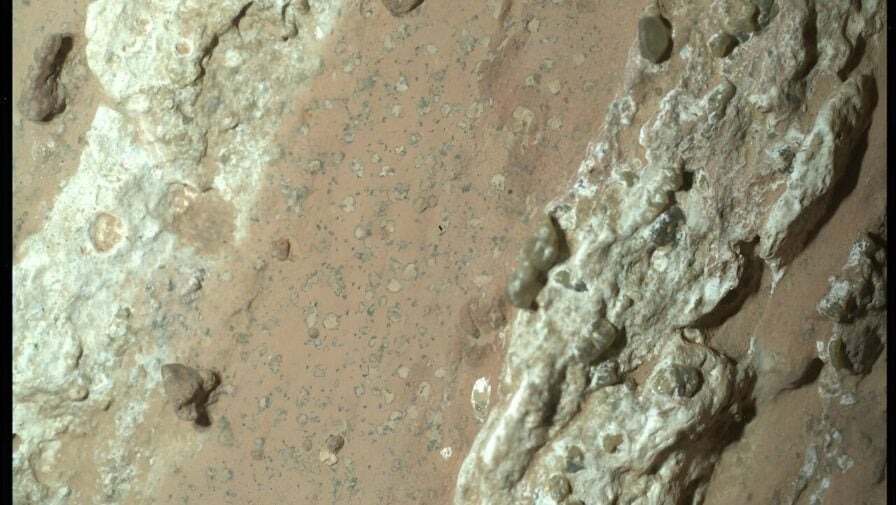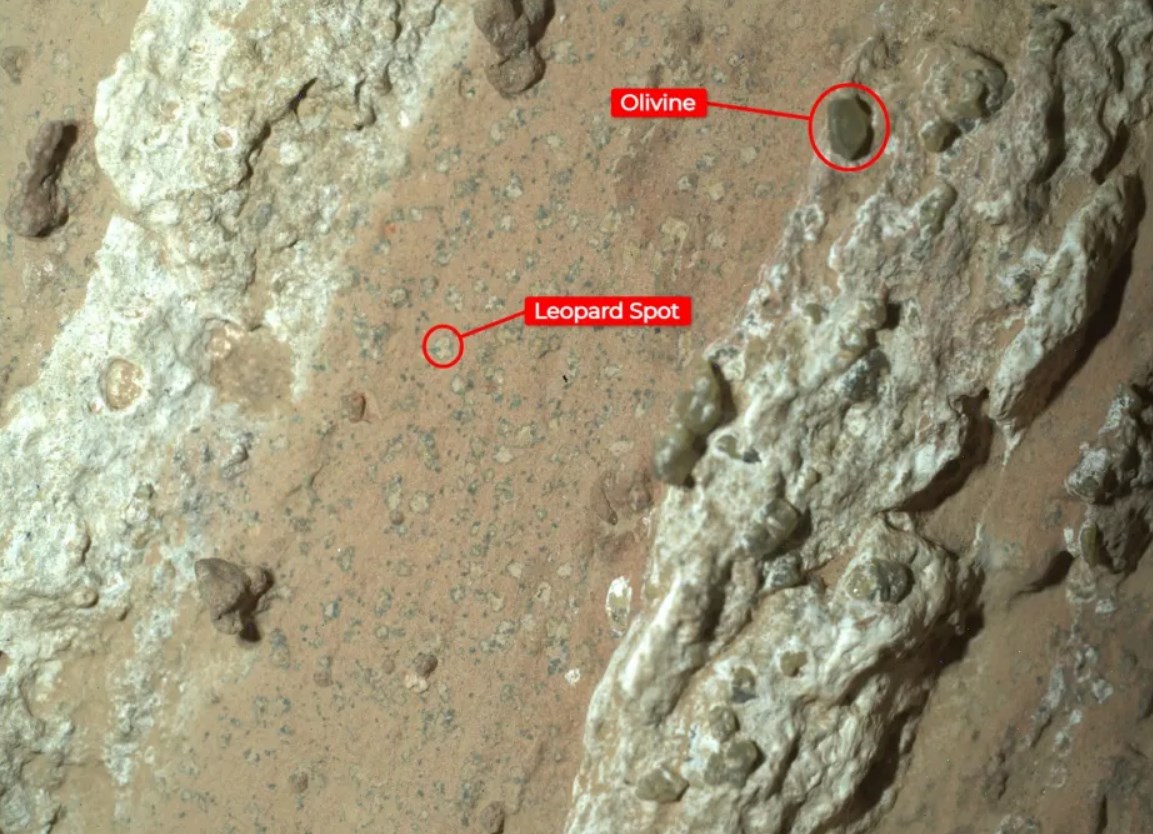NASA’s Perseverance Mars rover has discovered a unique rock that may indicate the existence of microbial life on Mars in the distant past. This discovery was named Cheyava Falls. The rock, measuring 1 by 0.6 meters, was found on July 21 in the Neretva Vallis region. Billions of years ago, this valley was filled with liquid water, creating conditions for the possible development of life.

The rock has long white veins of calcium sulfate and bands of probably hematite. However, of particular interest are dozens of dirty-white circles with black borders, each about a millimeter wide, which NASA described as “leopard spots.” Chemical analysis showed that the black rings contained iron and phosphates.
“These spots are a big surprise. On Earth, these types of features in rocks are often associated with the fossilized record of microbes living in the subsurface,” said astrobiologist David Flannery.

On our planet, such spots are formed by chemical reactions that change the color of rocks and form iron and phosphate rings. Such reactions also release energy, which can be a food source for microbes. Scientist Ken Farley called Cheyava Falls “the most mysterious and potentially important rock” discovered by Perseverance.
The origin of these spots, however, remains unclear. One hypothesis is that the rock was originally mud with organic compounds that later turned into stone. Fluid seeping through the cracks brought mineral deposits, creating calcium streaks and spots.
Another explanation has to do with the presence of olivine, a mineral formed in magma. This may indicate that the Cheyava Falls spots resulted from chemical reactions at high temperatures incompatible with life.
NASA noted that further research on the rock would only be possible after its return to Earth. In the meantime, Perseverance continues to explore in the Neretva Vallis region. The space agency plans to send a crew to Mars in the 2030s, but due to delays in returning humans to the moon and SpaceX Starship not being ready, those plans may be delayed.
Earlier we reported on how the Curiosity rover found pure sulfur on Mars.
According to nasa.gov


